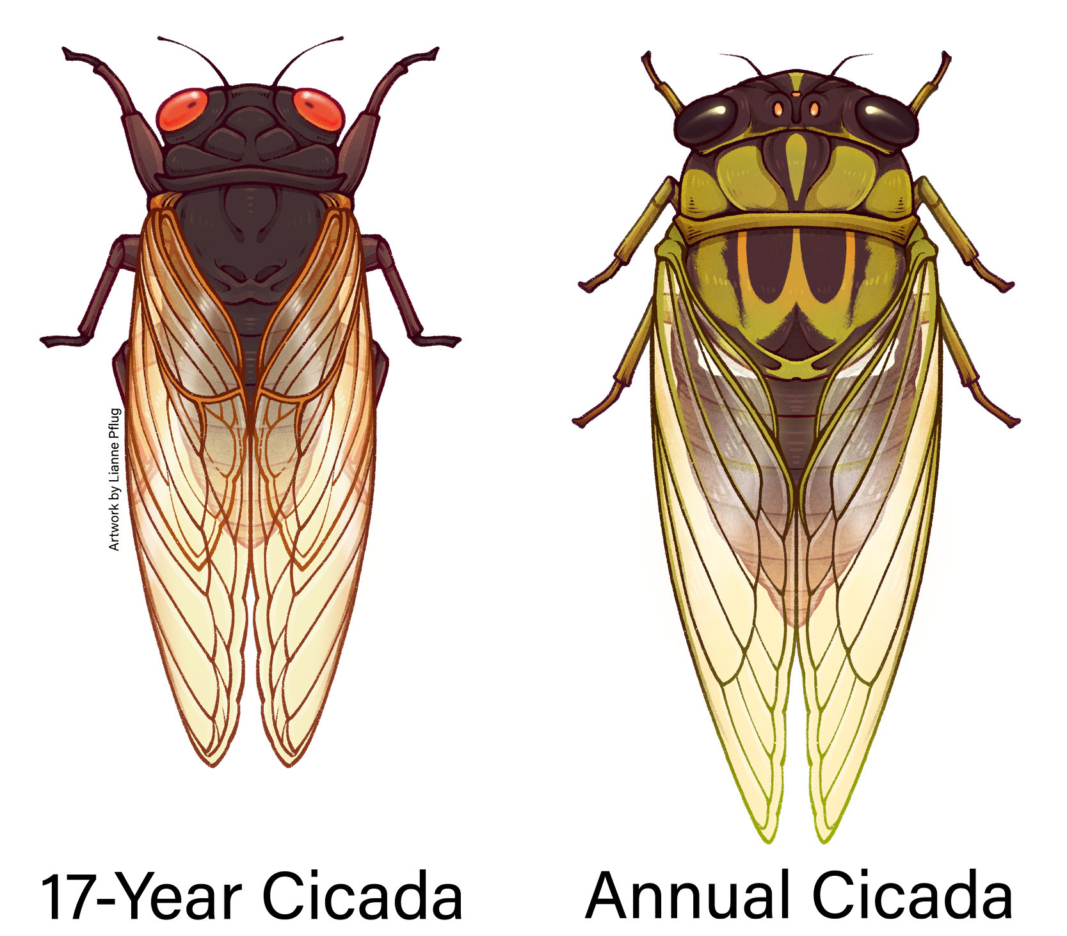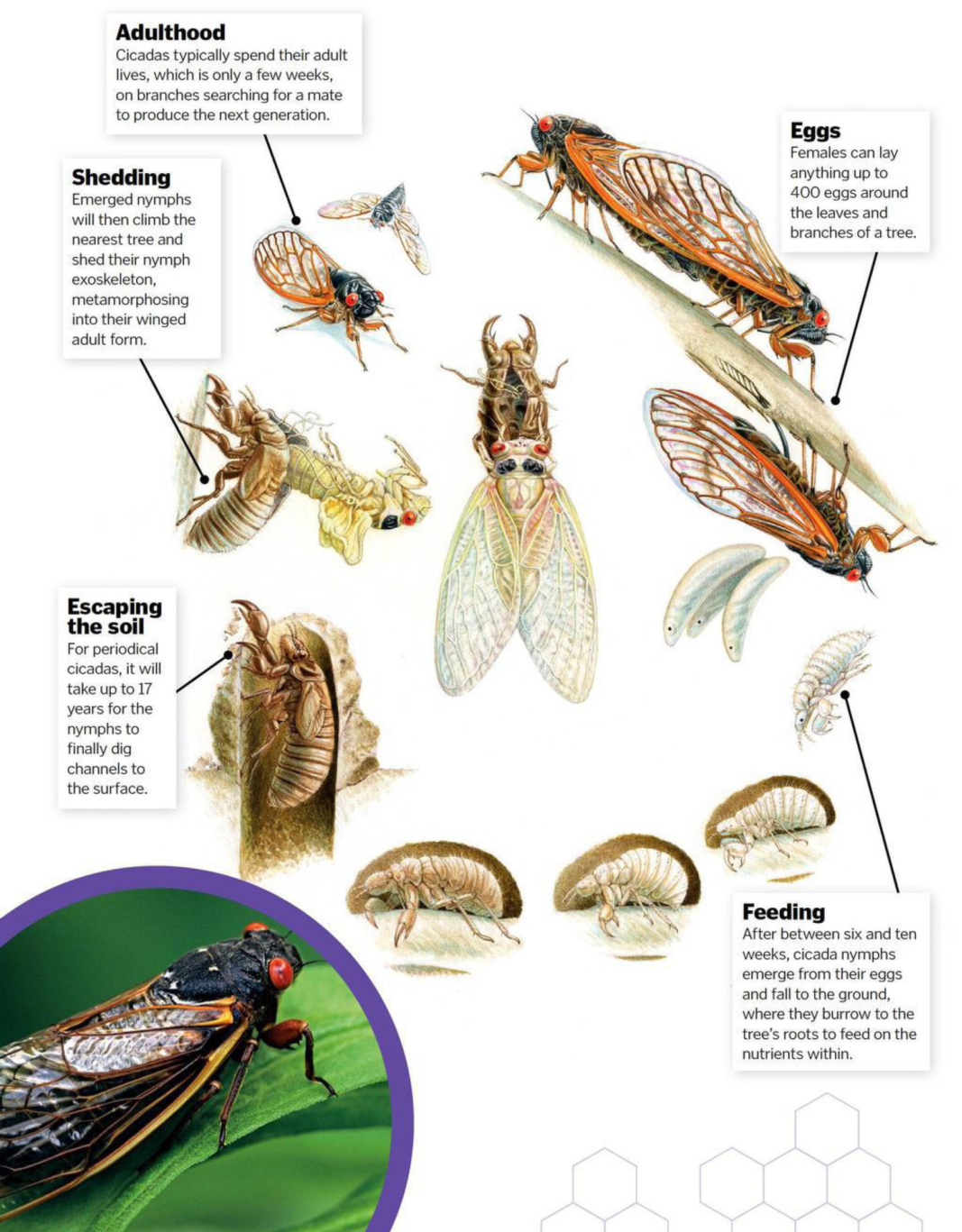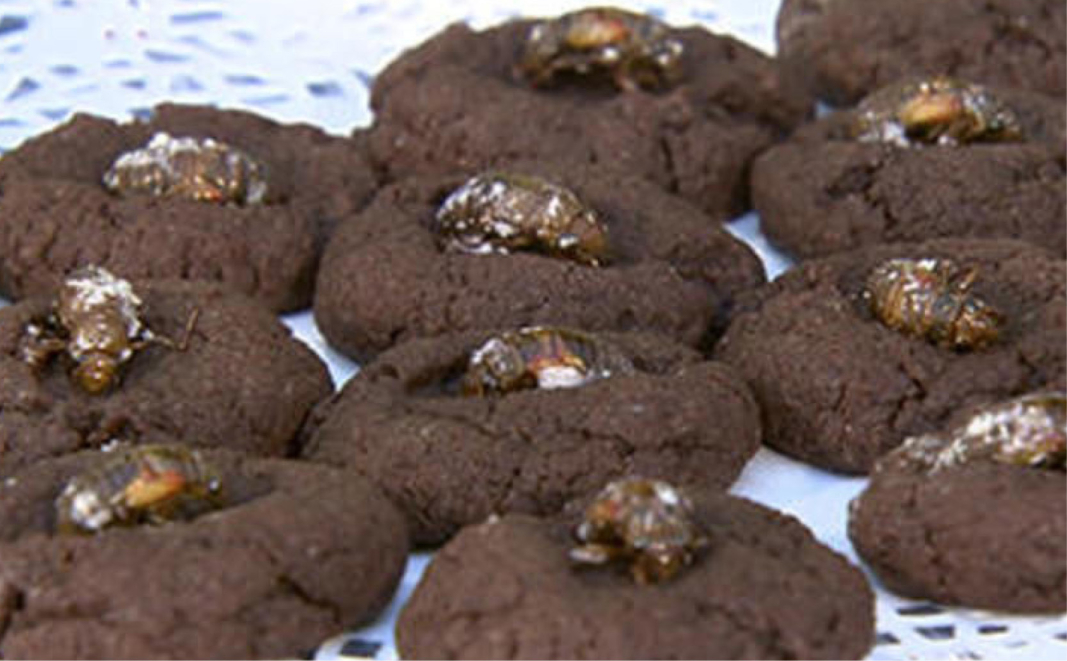Bzzzzzzzzz

Don’t forget your Cicada gear!!
It’s that time of year. Hot muggy days. Spot showers and thunderstorms. Counting the days left before school begins. And a “buzz” in the air. Yep –those PIA cicadas. Like you, I’m fascinated by the noise, habits, and rituals of these not so pretty insects. I think it’s cool how one starts to buzz, and others jump in, joining one another in chorus, (something not surprisingly called “chorusing”. Cicadas are fascinating insects that have a rich history and interesting trivia associated with them, dating back thousands of years. I jumped on the web and dug out some cool info I think you’ll enjoy. And although some folks may find them appetizing, I’m not one to try them! Special thanks to Wikipedia, cornell.edu, youtube.com, Smithsonian, and cbsnews.com for the info. Enjoy the buzzzzz!
Cool Videos:
- Sounds of the cicada. Jeff the Nature Guy finds a cicada and talks about the bug’s long and hungry life cycle.
- Cute video of a kid with a cicada in her front yard. :)))))
- Time lapse of cicada coming out of shell
- Periodical Cicadas Overrun the Forest | Planet Earth | BBC Earth
- Cicadas are edible
- A cicada is an insect belonging to the order Hemiptera.. They are well-known for their distinctive songs, particularly the loud buzzing or whirring sounds produced by the males. Cicadas have a unique life cycle and are categorized into two main groups: annual cicadas (think every summer) and periodical cicadas 13-17 years in “broods”.

- Cicadas are relatively large insects, typically ranging from about 1 to 2 inches (2.5 to 5 centimeters) in length, depending on the species. They have two pairs of membranous wings that are transparent or slightly opaque. The front wings are larger than the hind wings and are held roof-like over the abdomen when at rest.
- Male cicadas produce loud calls by using specialized structures called tymbals, which are located on their abdomen. They generate these sounds as part of their mating behavior.
- In Greek mythology, cicadas were linked to the Muses – nine goddesses. It was believed that the music and songs of the cicadas were a form of divine inspiration that connected them to the arts and creativity.
- The periodical cicadas, also known as “Brood X,” are one of the most well-known cicada groups in the United States. They emerge every 13-17 years in massive numbers.
- In some cultures, cicadas have religious connotations. In ancient Greece, they were associated with Apollo, the god of music, poetry, and the sun. In Japan, cicadas are considered symbols of summer and are associated with Hachiman, the god of war and agriculture.

- The noise produced by cicadas is a fascinating aspect of their biology and behavior. The sounds they make are primarily produced by male cicadas as a means of communication and attracting mates. Cicada noises have evolved over millions of years as an essential part of their reproductive behavior and survival strategies.
- Here’s the science behind cicada noises: Cicadas have specialized structures called tymbals, which are drum-like membranes located on either side of their abdomen. These tymbals consist of a series of ribs that can rapidly contract and relax, producing a clicking or snapping sound. The cicada’s tymbal muscles contract, causing the tymbals to buckle inward. When the muscles relax, the tymbals snap back to their original position. This action creates a distinct sound.
- The abdomen of male cicadas is typically hollow, acting as a resonance chamber that amplifies the sound produced by the tymbals. The sound is further amplified as it resonates through the insect’s exoskeleton.
- In some species, male cicadas synchronize their calls to create a chorus effect.This behavior is known as “chorusing” and serves to increase the overall volume and attract more females.
- Interestingly, cicadas also use their calls for thermoregulation. The heat generated during the rapid muscle contractions helps warm the insect’s body, making it more active in cooler conditions.
- Brood X, also known as the Great Eastern Brood, is one of the most remarkable groups of periodical cicadas in the United States. emerging en masse at regular intervals, typically every 13 or 17 years. Brood X is particularly notable for its large numbers and widespread distribution, found in the eastern United States, covering states such as Delaware, Georgia, Illinois, Indiana, Kentucky, Maryland, Michigan, New Jersey, New York, North Carolina, Ohio, Pennsylvania, Tennessee, Virginia, West Virginia, and Washington D.C. When the temperature warms in the spring, cicadas rise up from the dirt. The raucous four to six week-long event rages until all the participants die and litter the forest floor.

- Once emerged, the male cicadas begin their loud, distinctive calling songs to attract females. After mating, the females lay their eggs in small branches of trees. Once hatched, the nymphs fall to the ground, where they burrow into the soil and begin their 17-year underground development.
- A full-scale cicadas can reach a deafening crescendo as millions of males all call for mates at the same time. The amorous din can reach roughly 100 decibels, which is just shy of standing three feet from a chainsaw.
- Scientists from the Navy’s Undersea Warfare Center have studied cicadas in hopes of figuring out how male cicadas manage to produce their incredibly noisy mating calls without expending much effort. The idea is that a device that mimicked a cicada’s method of sound production could be used for remote sensing underwater or ship-to-ship communications.
- In the summertime, two-inch-long wasps called cicada killers are as single-minded as their name suggests. After mating, females take to the skies to do nothing but hunt bumbling cicadas. When a female cicada killer grapples with her quarry in mid-air, she uses a honking, needle-sharp stinger to pierce the cicada’s hard exoskeleton and inject a venom that paralyzes the victim. After dragging her immobilized prey into a special chamber she’s hollowed out along her burrow, the female wasp lays a single egg on the cicada and seals the chamber’s entrance. In two or three days, the larval wasp will hatch and begin eating the paralyzed cicada alive over the course of a week or two. Nature’s incredible cycle at its best.
- Cicada Cookie recipe!

Yummmmm!!!!!! :))))))
::::::::::::::::::::::::::::::::::::::::::::::::::::::::::::::::::::::::::::::::::::::::::
DO YOU LIKE CONTESTS?
Me, too.
As you may know the Kowalski Heat Treating logo finds its way
into the visuals of my Friday posts.
I. Love. My. Logo.
One week there could be three logos.
The next week there could be 15 logos.
And sometimes the logo is very small or just a partial logo showing.
But there are always logos in some of the pictures.
So, I challenge you, my beloved readers, to count them and send me a
quick email with the total number of logos in the Friday post.
On the following Tuesday I’ll pick a winner from the correct answers
and send that lucky person some great KHT swag.
So, start counting and good luck!
Oh, and the logos at the very top header don’t count.
Got it? Good. :-))))
Have fun!!
::::::::::::::::::::::::::::::::::::::::::::::::::::::::::::::::::::::::::::::::::::::::::



Leave a Reply
Want to join the discussion?Feel free to contribute!